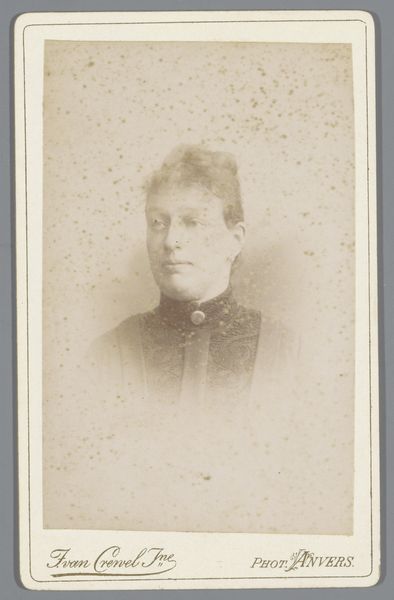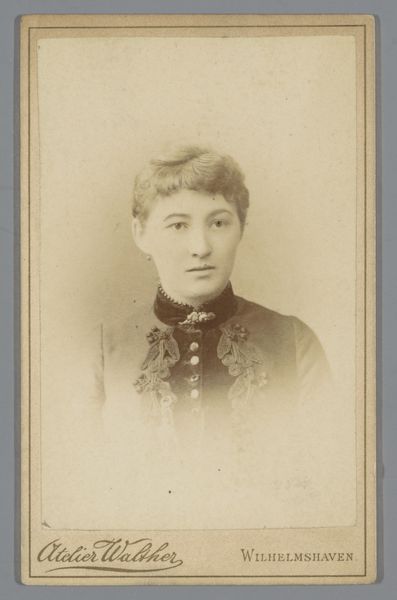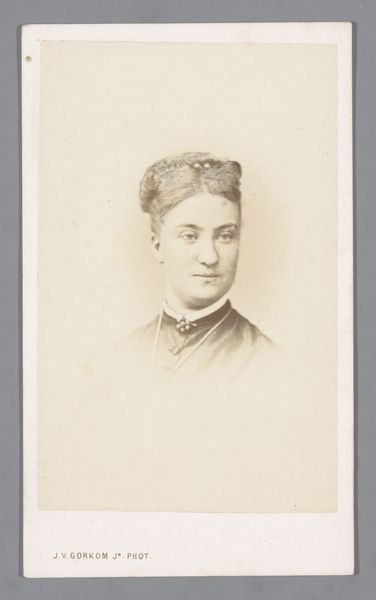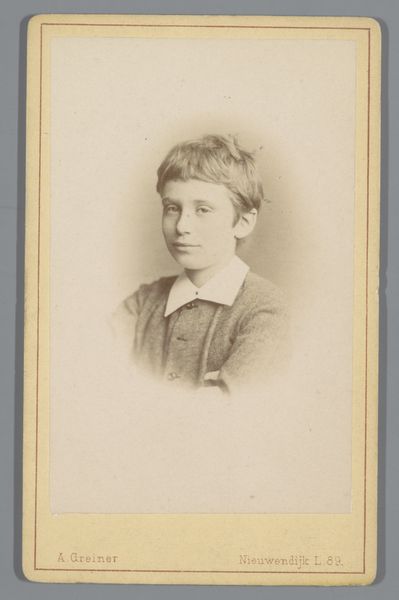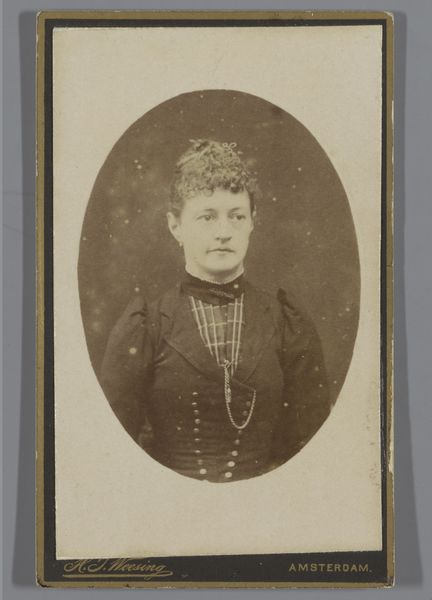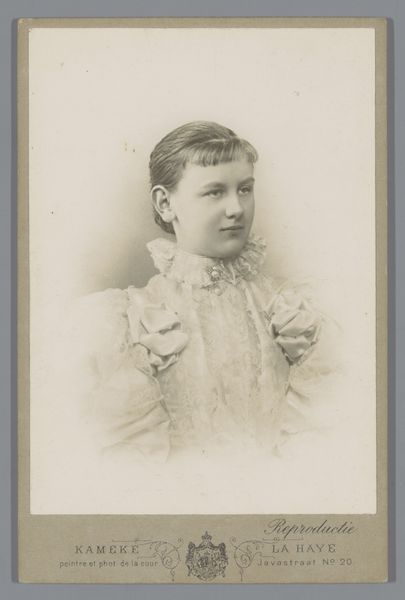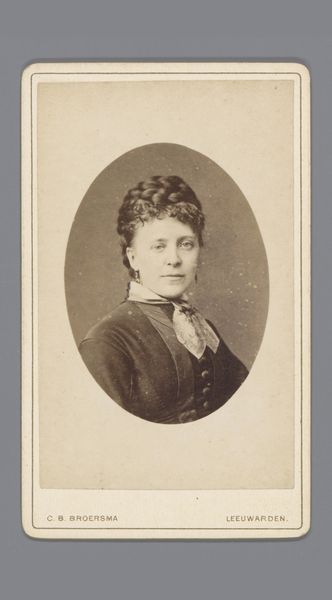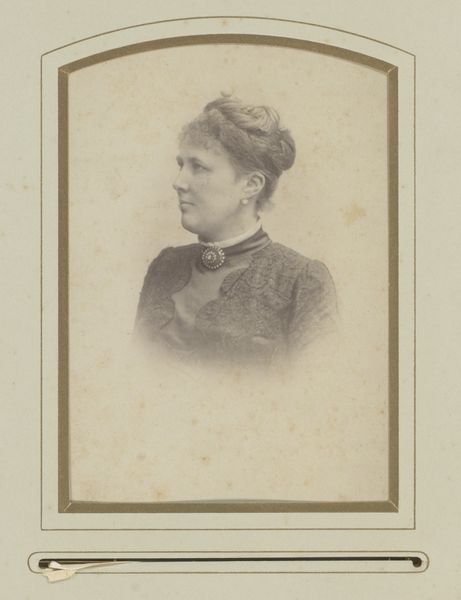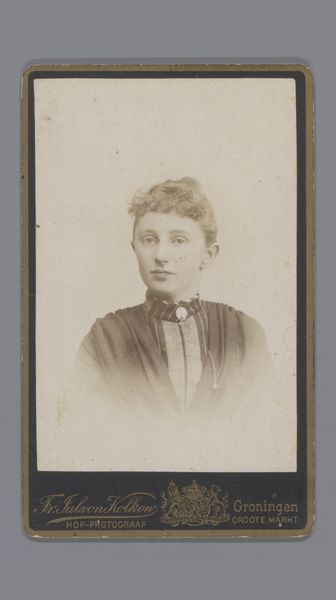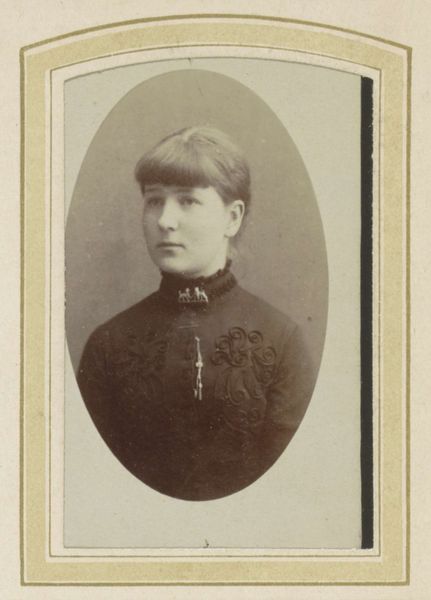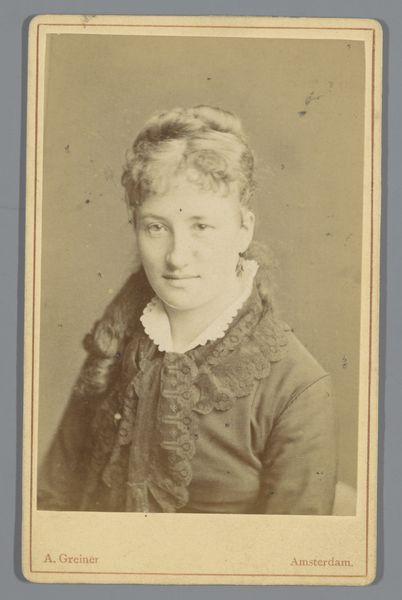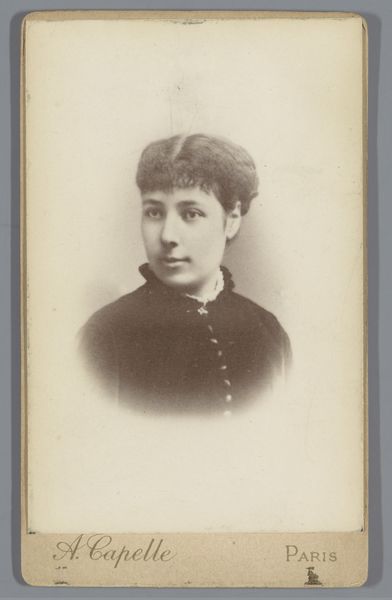
photography
#
portrait
#
photography
#
historical photography
#
historical fashion
#
19th century
Dimensions: height 145 mm, width 103 mm
Copyright: Rijks Museum: Open Domain
Curator: Here in the Rijksmuseum, we're looking at a photograph by Willem Gerhardus Kuijer. It’s entitled “Portret van een onbekende vrouw,” or "Portrait of an Unknown Woman," dating from somewhere between 1862 and 1899. Editor: Isn’t it incredible how much expression is captured? Even in monochrome, she feels so alive, doesn't she? A bit melancholic, perhaps, but definitely present. Curator: Indeed. And considering its photographic origins, it speaks volumes. Kuijer’s studio was located here in Amsterdam, on Westermarkt 19, and the production of such images became quite systematized by this time. It's fascinating how photography democratized portraiture. No longer the sole domain of the wealthy and their painted likenesses, a broader stratum of society could participate in image-making and preservation. Editor: You're right, there’s a strange intimacy knowing so little, like stumbling upon a secret. I keep imagining the clothes, the light hitting the texture of her coat. And that little brooch of a running dog - what was *her* story? Curator: Precisely. That outfit, typical of late 19th-century fashion, speaks of her place in society, and the means available to her. Photography studios produced standardized backdrops and poses and would provide accessories, but certain elements like the brooch give some clue as to the subject. Editor: Absolutely. Though "unknown woman" feels somewhat reductive. The image possesses such vibrant presence. She wasn’t just *any* woman. You can almost smell the faint perfume, sense the stillness, a shared vulnerability of subject and photographer collaborating to craft the shot. What materials were they working with, what kind of lighting was involved, what steps did it take to finally produce this one extant print? Curator: A vital consideration! Albumen prints, typically. It demanded skillful preparation involving coating paper with albumen from egg whites to create a smooth, light-sensitive surface, adding another layer to consider what processes brought it to the current image. Editor: Right, right… eggs… So, an unearthing and building up from many pieces until it arrives to us here and now. The beauty of this image, after this dialogue, isn’t lost in the darkroom, is it? It's just been brought out even further into the light. Curator: A poignant image that, regardless of origin and material, has successfully allowed the spirit of one woman to travel through history.
Comments
No comments
Be the first to comment and join the conversation on the ultimate creative platform.
